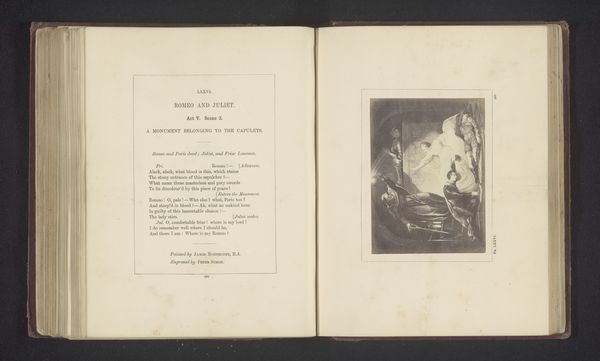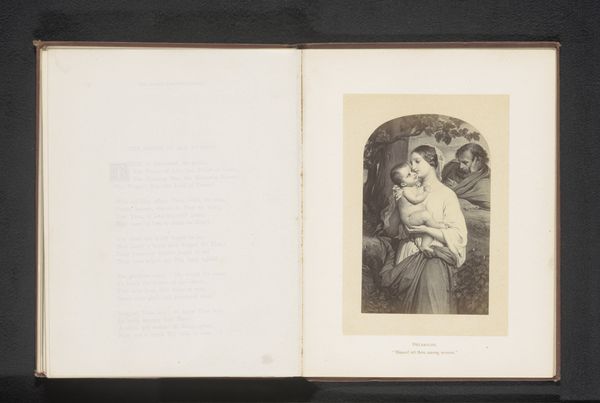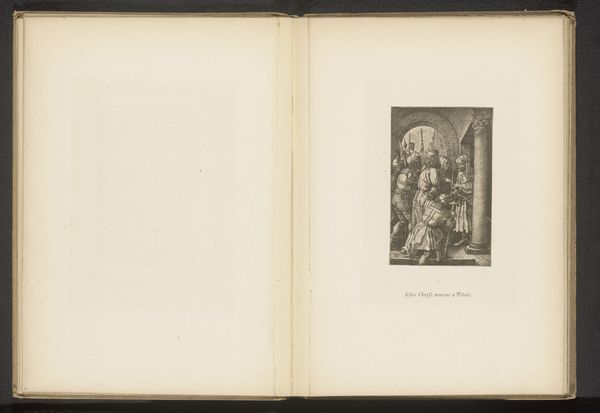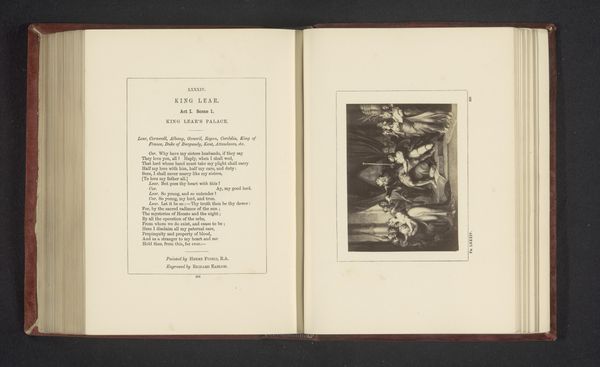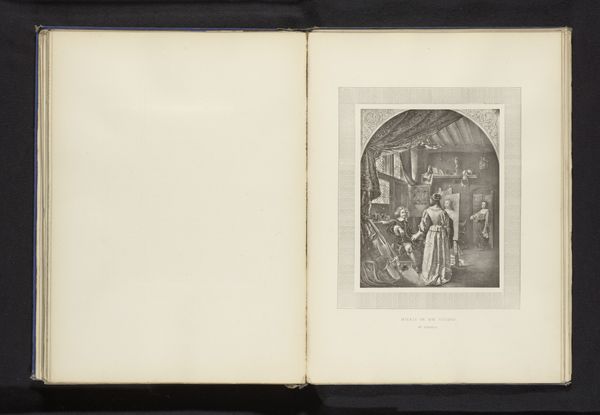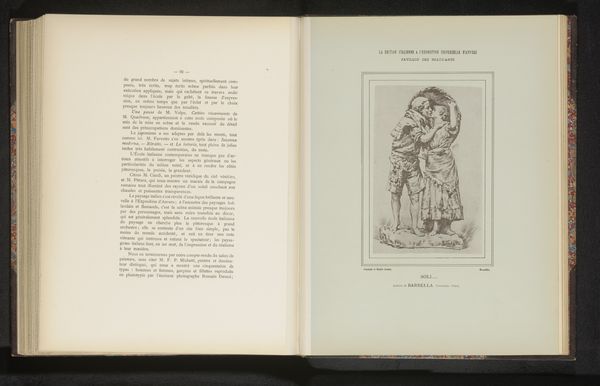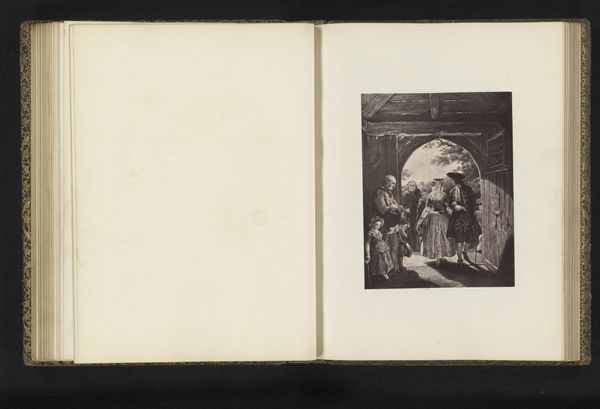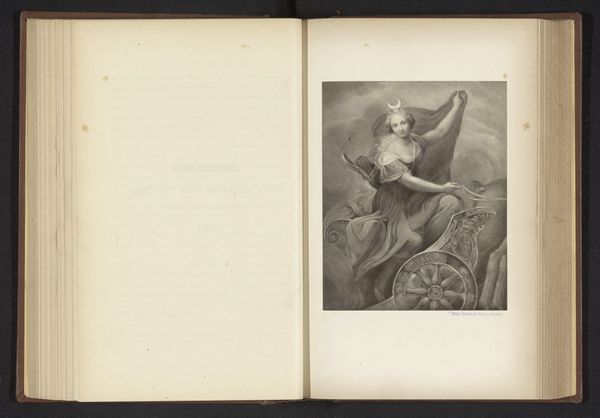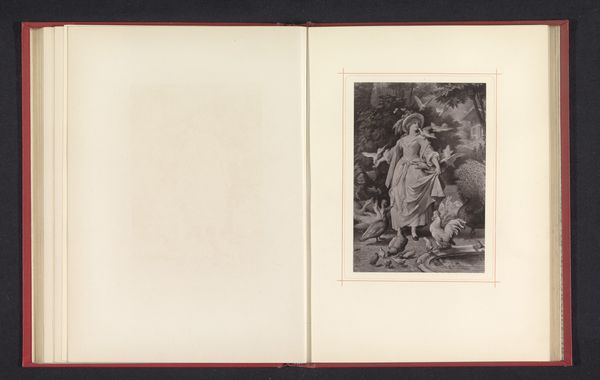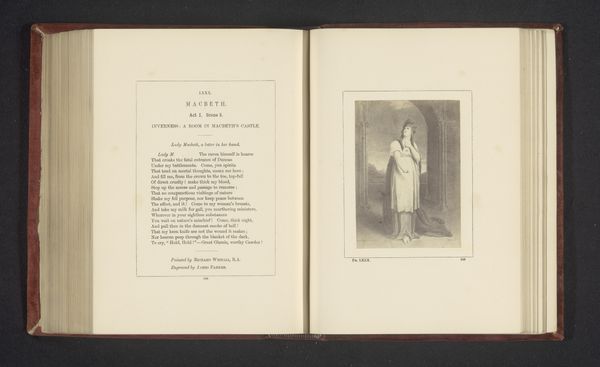
Fotoreproductie van een prent naar een schilderij, voorstellende de Visitatie before 1871
0:00
0:00
print, paper, engraving
#
aged paper
#
homemade paper
#
medieval
#
paperlike
# print
#
light coloured
#
white palette
#
paper texture
#
paper
#
folded paper
#
thick font
#
white font
#
history-painting
#
academic-art
#
engraving
#
realism
#
historical font
Dimensions: height 127 mm, width 79 mm
Copyright: Rijks Museum: Open Domain
Editor: Here we have an interesting reproduction, predating 1871, of a painting called "The Visitation" by an anonymous artist. It’s presented as a print within a book. The aged paper gives it a real sense of history. I'm struck by the contrast between the delicate figures and the bold, almost crude, engraving style. How do you approach a piece like this? Curator: Well, I'm immediately drawn to the means of its production. The fact that it’s a reproductive print tells us so much about its intended audience and its function. It served as a way to disseminate religious imagery widely, making art accessible to a broader public beyond the elite who could commission original paintings. Notice the quality of the paper. How does its texture and the evident signs of age play into your understanding? Editor: I see what you mean. It adds to the authenticity somehow, knowing it’s survived so long. It feels more "real" than a pristine modern copy, even if it's a reproduction. It speaks to a certain craftsmanship of a bygone era. It makes me think, what kind of labor was involved? Curator: Precisely. Consider the engraver’s skill – translating the nuances of a painting into the graphic language of lines and shading. That labor, often anonymous and undervalued, was essential to the circulation of these images and their impact on religious culture. What statement can you derive about religion? Editor: Hmmm, the book presentation itself emphasizes the commodification and accessibility of religion, making faith almost like a product, available for personal consumption. This has an almost democratizing influence for Christianity and challenges elitist practices of its earlier origins. Curator: Exactly! It also challenges the idea of high art. It existed within the everyday context of a book and became a tool for instruction and contemplation, reflecting the material conditions of its creation and use. It’s a beautiful blend of artistry, production, and consumption all wrapped into one artifact. What else? Editor: I hadn't thought about it that way before, really digging into the “how” and “why” of its making. Now I'm appreciating this object in a completely different light! Curator: Indeed! By examining the materials, the production process, and the context of consumption, we can unlock a far richer understanding of its cultural significance and relevance.
Comments
No comments
Be the first to comment and join the conversation on the ultimate creative platform.
